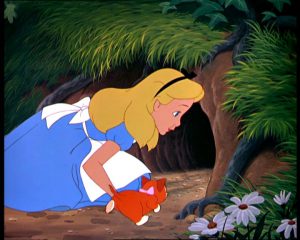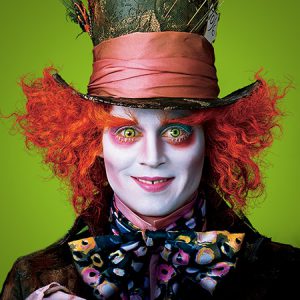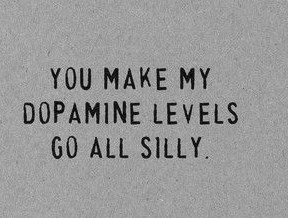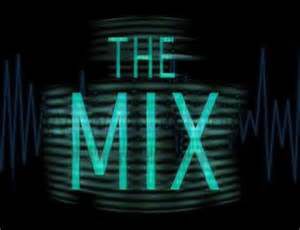
For the annual dream conference organized by the International Association for the Study of Dreams (IASD) I was invited to join a panel to discuss Dreaming and Mental imagery. My co-presenters were Kelly Bulkeley, who recently published the book Big Dreams,The Science of Dreaming & The Origins Of Religion, Antonio Zadra, Professor in the Department of Psychology, Université de Montreal, and photographer and dreamer Bonnie Mitsch.
I have written a very interesting online class called Dreaming about the Brain. If you like this blog, you should check it out. One of the lessons in this class is devoted to the three major currents in dream research. the Activation Input Modulation (AIM) model of Allan Hobson, the Psychodynamic model as proposed by Mark Solms and the Neurocognitive Model by Foulkes and Domhoff. My online class devotes separate chapters on each model, but in this presentation I had four relatively simple themes:
- Perception and Dreaming
- Are dreams Hallucinations?
- Imagery and Dreaming
- The Function of Dreaming
Perception and dreaming
Dreaming is perception. We have five senses to perceive the world: hearing, sight, touch, smell, and taste. When we fall asleep, we are like Alice in wonderland, falling down the rabbit hole. We fall down, in our hypnagogic imagery we see, touch, taste, sometimes smell, we hear and sometimes in dreams we taste. But we dreamers, we know that sometimes we can imagine as many as 6 impossible things before breakfast…

There are two ways to understand how perception works in the brain.
One way is called Bottom Up processing.
Imagine that you are outside and an insect flies near your face. Without thinking, you raise your hand and you scare it away. This is bottom up processing. Your senses drive your brain. Without making a conscious decision about it, you already acted because you saw something. There is only one model that uses this as a mode of perception: the AIM model.
The AIM model assumes that the sensory data collected in the brain triggers responses in the body. When that happens, larger cognitive networks in the cortex become activated and perception occurs.
Top down process can be described by how you find your way in the dark. You know your bedroom, and based on those cognitive patterns you find your way in the dark to the bathroom. When you are sleeping in an unfamiliar room, your brain lacks these networks and you stumble around in the dark.
Both the psychodynamic model and the neurocognitive model assume that perception in dreaming works like this. Your dreaming brain uses known networks to find its way around in the deepest layers of your sleeping mind.
Are dreams hallucinations?
I remember a day that, right before waking up, I had an out-of-body experience. It was at the end of a lovely lucid dream and I was flying above my bed, checking if it was really my bed. Because in my dreaming mind, I could be mistaken and take possession of a body that was not mine. So I checked: one dark-haired small person next to a dark/grey haired man, yes, I think I am home. And I connected with my body. A hallucination.
A hallucination is, according to dictionary.com: a sensory experience of something that does not existoutside the mind, caused by various physical and mentaldisorders, or by reaction to certain toxic substances, andusually manifested as visual or auditory images.
We as dream lovers know that dreams can offer you a truth that your waking self has not been ready for. There is a great story about a man in Tibet who could escape the Chinese invaders by taken a path that he had seen in his dreams.
How does science see dreams? You will be disappointed… But hang on, because I have got a rabbit to pull out of my Mad Hatter.

Hobson says: “Dreaming is compatible to a psychosis; a mental state characterized by hallucinations or delusions. A dream is like a delirium: an organic brain disease defined by disorientation, visual hallucinations, illogical thinking, loss of recent memory and confabulation”.
Dear me, we get delirious whenever we dream? Can Mark Solms, the man who brought back Freud to the twenty-first century by discovering that the pleasure principle is active during dreaming, bring us some relieve? I am afraid not.
Solms: “Dreams are a delusional hallucinatory state driven by activation of the brain’s motivational system. And like delusions, they appear to be stoked by an abundance of the neurotransmitter Dopamine”.
Should we all go to sleep instead of going to the pub? Well it is time to pull a white rabbit out of my Mad Hatter: the neurocognitive model claims that dreaming resembles daydreaming. Thank you for saving us dream lovers here Mr. Domhoff.

Imagery and dReaming
We are vision oriented creatures. We use our eyes more than any other sense we have got. But when we sleep our eyes are closed and we still see imagery. What do our three models say about that?
The AIM model says that the imagery in dreaming depends on the choline level in your brain. Galantamine, a supplement that is taken to increse the likelyhood of lucid dreaming, enhances the level of choline in your brain. You get more vivid dreams and your chances of becomming lucid increase.
The psychodynamic model says that it is dopamine that is responsible for the imagery you see in dreaming.
 Increasing dopamine by using L-dopa, increases lively imagry in dreams.
Increasing dopamine by using L-dopa, increases lively imagry in dreams.
The neurocognitive model has got a more neutral point. It don’t choose the dopamine or the choline explanation for imagery.
 When your brain has got this mix of dopamine, choline and an absence of norepinephrine, serotonin and histamine, you will experience dream imagery.
When your brain has got this mix of dopamine, choline and an absence of norepinephrine, serotonin and histamine, you will experience dream imagery.
Function of dreaming
Science has disappointed as a bit when it comes to giving clarity on the function of dreaming. The latest insight is that dreaming reinforces memory and that we try out different versions of possible futures. It has a vagueness you would not expect from science. But let’s get more specific.
What does AIM say about the function of dreaming? Dreaming is a preparation for waking life. Dreaming is a supportive state to survive this cruel and rather harsh world.
The psychodynamic model says that dreams keep us balanced. We can process our deepest wishes, desires and fears, by talking about our dreams with a professional.

The one thing that bugs me a bit about this model is that Solms clearly has defined the pleasure principle in terms of the activity of dopamine during dreaming, but that thanatos seems absent. In my eyes that is were Freud stood out above the rest. The balancing between these life forces was -in my eyes- the charm of Freud.
The neurocognitive model says that dreaming allows us to reinforce memory processes. If it has meaning for an individual, more power to you. But it is certainly not the subject of science.
Luckily I can pull another rabbit out of my Mad Hatter. Evan Thompson wrote a book called Waking Dreaming Being. In his eyes, the mind is like a radio station. The gatekeeper of the brain, the thalamus, only talks to the cortex through memory systems it activates during sleep. In that way it chances the frequency and the pitch if your perceptions during dreaming. This really sounds like what I am doing in mutual dreaming processes. I try to “Tune into the Frequency” of the person I want to meet during my dreams. It also happens to be the title of the online conference about psi and dreaming of the IASD. This is a conference were you can read and react to presentations about how you can experience psi dreaming. You should definitely join it.
Imagery and archetypes
We have missed one guy, haven’t we?

Carl Gustav Jung, the man who constructed archetypes. Images that have the same meaning in different cultures. There is a scientist, Vincenza Tiberi, who discovered that worldwide there are five shared archetypes.
The Great Mother: the goddess, the mother, the earth.
The Self: all the sub personalities you encounter in dreams and waking life.
Marriage: the union and the splitting up of pairs.
Ancestor: the call from beyond the grave.
Loosing Teeth: all around the world people share dreams of loosing teeth.
I thank you for your attention.
Youtube
Facebook
Online Courses
Free ebook

